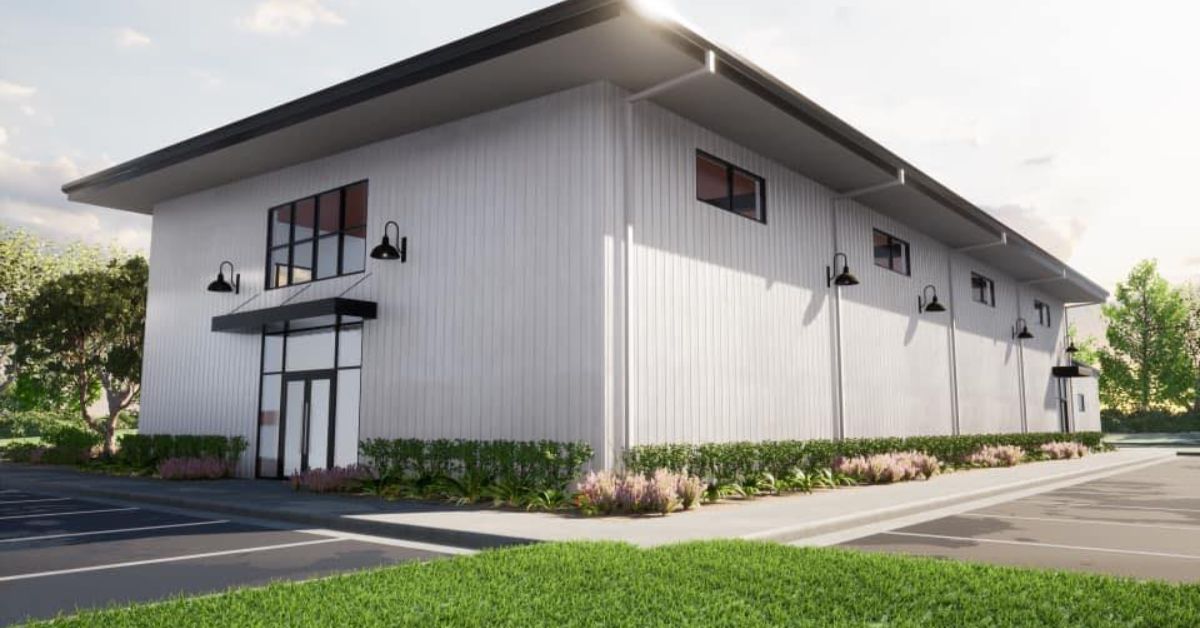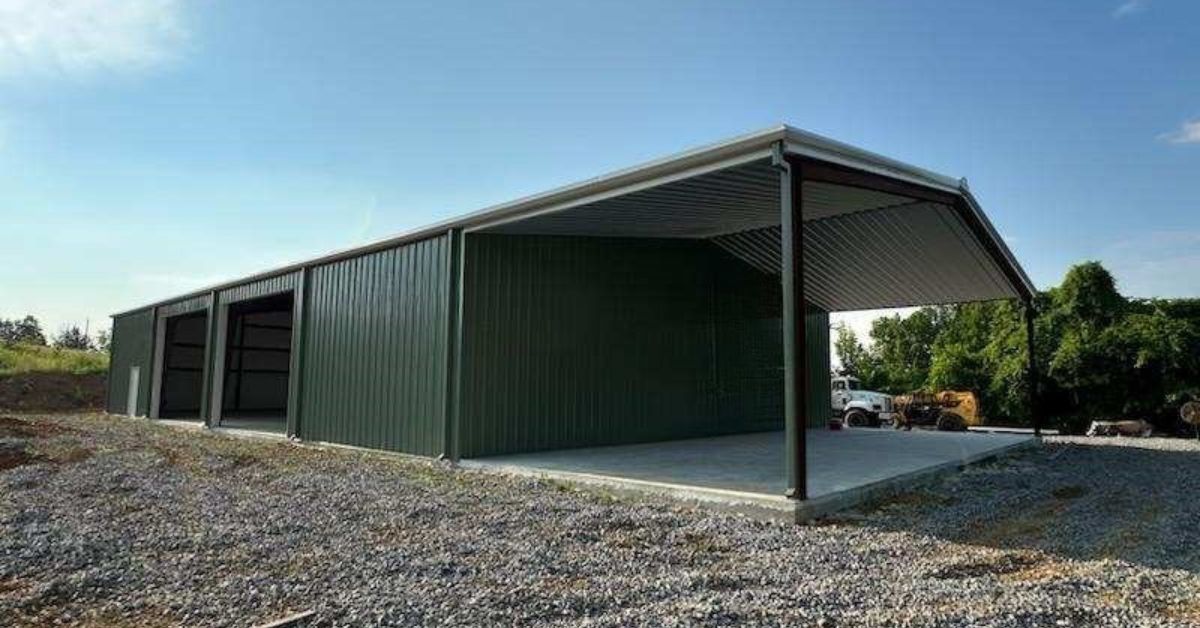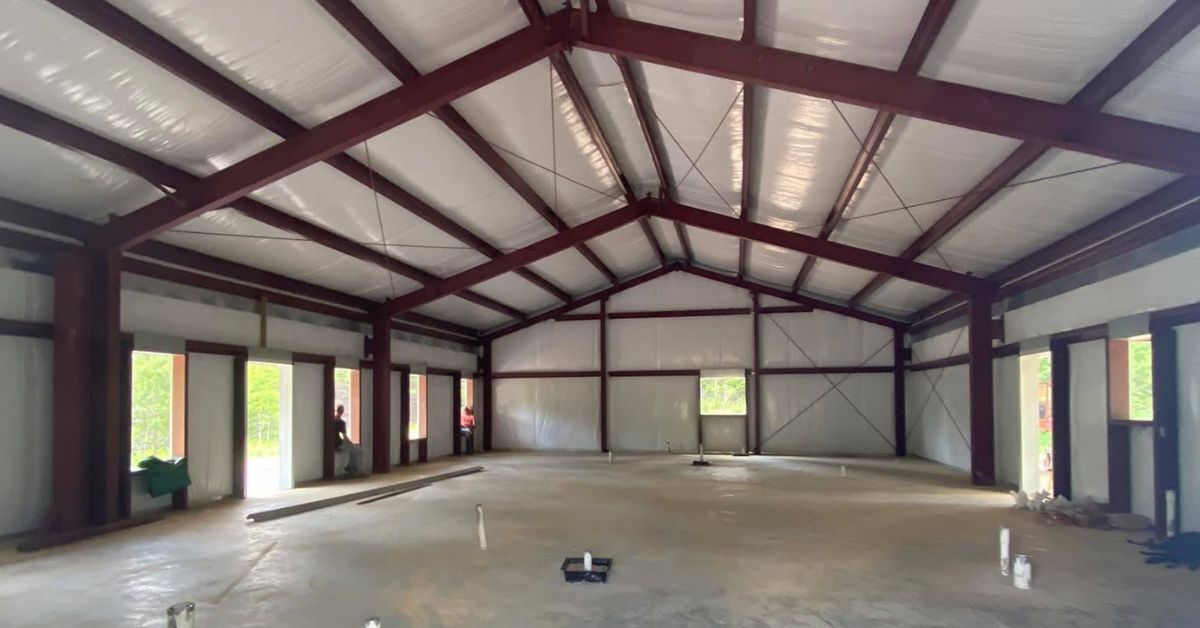Bolt-Up vs. Welded-Up Metal Buildings: Which To Choose
Bolt-Up vs. Welded-Up Metal Buildings: Which To Choose

When it comes to metal buildings, the options often boil down to two main construction methods: bolt-up or welded-up structures. Both are widely used across industries for their durability, adaptability, and cost-effectiveness, but they differ significantly in terms of their features and structure.
Choosing the right type depends on several factors, which we plan to go over with you in this blog. By understanding the differences between bolt-up and welded-up metal buildings, you’ll be able to choose the type that’s right for your needs.
Assembly Process
The assembly process is one of the most distinct points of comparison between these two types of metal buildings. A bolt-up building is pre-engineered in a factory, with precisely manufactured components that arrive on-site ready to be bolted together. Pre-drilled holes and pre-cut parts make the process smoother and faster. This method eliminates many of the potential delays and errors that can occur with on-site fabrication, making bolt-up buildings an efficient choice for projects with tight schedules.
Welded-up buildings, on the other hand, are constructed from raw steel components that are cut, shaped, and welded together directly at the site. This approach demands skilled welders and a significant amount of time, as every piece must be custom-fitted and welded into place. While welded-up construction allows for flexibility in design, the on-site fabrication process is more labor-intensive and leaves more room for human error. The slower timeline can translate to higher costs and increased downtime, especially for businesses relying on quick project completion.
Customization
If your project calls for a highly specific or unique design, welded-up buildings are typically the go-to solution. This is because the on-site fabrication process allows contractors to fully customize the structure to meet unique specifications, making welded-up buildings an excellent choice for intricate architectural needs or non-standard applications.
However, bolt-up buildings also offer a surprising amount of versatility, especially for most standard commercial, industrial, and agricultural projects. Modern bolt-up designs come with a wide range of pre-engineered configurations that you can tailor to suit different purposes. While bolt-up customization may not be as extensive as welded-up construction, the available options often meet the demands of most customers and streamline the design process without compromising on functionality.

Construction Time
When time is of the essence, bolt-up buildings shine. The pre-engineered components are manufactured off-site and delivered ready for quick assembly. Because the pieces are pre-drilled and pre-cut, construction becomes more about assembly than fabrication, drastically cutting down on project time. This efficiency not only accelerates completion but also reduces labor costs, making it a win-win for builders and clients alike.
Welded-up buildings, conversely, require far more time to construct. With all the shaping, cutting, and welding done on-site, projects often extend beyond initial timelines. This is particularly true for large or intricate designs, where precision and custom work can add weeks or even months to the build schedule. Additionally, weather conditions and site-specific variables can further slow down the process, making welded-up construction less predictable.
Cost
Cost is a critical factor in any construction project, and here, bolt-up buildings have a clear advantage. The pre-fabrication process significantly reduces manufacturing expenses. Mass production of components, combined with reduced need for skilled labor, lowers the overall cost of the project. Furthermore, the quicker assembly time for bolt-up buildings leads to additional savings by minimizing labor hours on-site.
Welded-up buildings, on the other hand, come with a heftier price tag. The need for skilled welders, specialized equipment, and extended labor hours significantly increases costs. On-site fabrication and customization also contribute to higher material wastage, which can further impact the budget. While some businesses can justify the added cost for highly specialized structures, it often makes welded-up buildings a less economical choice for standard applications.
Strength and Durability
Both bolt-up and welded-up buildings offer suitable strength and durability, but the way they achieve this varies. Bolt-up buildings rely on strong, precision-engineered components that people bolt together using high-quality connections. These structures are engineered to be robust and capable of withstanding varied environmental conditions. While the strength of bolt-up buildings depends on the integrity of the bolts and connections, they are more than adequate for most industrial, agricultural, and commercial uses.
Welded-up buildings, by their very nature, offer seamless strength. Welded joints create a continuous connection that can handle heavy loads and high-stress environments, making them a go-to choice for industries with extreme structural demands. However, this level of durability can sometimes be over-engineered for standard projects, where the added strength may not bring any tangible benefits compared to a bolt-up alternative.
Applications
Bolt-up metal buildings are designed to serve a broad range of purposes. Their pre-engineered nature makes them ideal for warehouses, workshops, storage facilities, and other standard projects where efficiency and cost-effectiveness are key priorities. Whether you’re constructing a small industrial shed or a large commercial facility, bolt-up buildings provide reliable performance for diverse applications.
Welded-up buildings, in contrast, are better suited for projects that require extensive design flexibility or must meet unique environmental demands. Heavy-duty industrial operations, specialized machinery storage, or custom architectural designs are all scenarios where welded-up construction might be the better fit. However, these applications represent niche needs, while bolt-up buildings are more adaptable across a broad spectrum of industries.

Maintenance
When it comes to maintenance and repairs, bolt-up buildings tend to have the upper hand. Their modular design makes it easy to replace or repair individual components by simply unbolting and swapping out parts. This flexibility minimizes downtime and ensures that maintenance tasks remain straightforward and cost-effective.
Maintaining a welded-up building can be a bit more challenging. Repairs often require skilled welders to cut and re-weld components, which not only takes more time but also adds to overall costs. Furthermore, correcting mistakes or making modifications can be a complex process, as welded connections provide less room for adjustments compared to bolted assemblies.
Where To Get Your Bolt-Up Metal Buildings
Now that you’ve seen the differences between bolt-up and welded-up metal buildings, it’s time to choose which is right for you. If bolt-up buildings are what you’re leaning towards, then Arco Building Systems is here to help. We offer a wide range of structure types, even agricultural buildings. All you have to do is let us know which one is best for your needs, and we’ll get the pre-engineered parts sent out to you as soon as possible.
